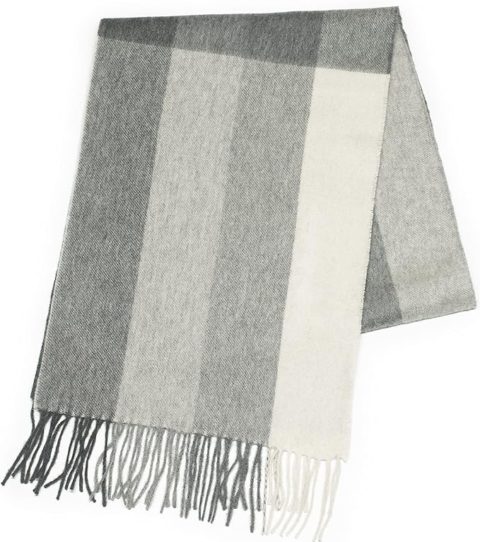So, Mortal Kombat took the fighting game (and video game world, in general) by storm, and made it a worthy opponent to Capcom’s Street Fighter II. The obvious question after that is: How do you follow up that success? The obvious answer came in November 1993 with Mortal Kombat II. Was it more of the same? Not quite. Building upon the framework of the original game, MKII honed what made the original game so great, added more Kombatants, more Fatalities, more secrets, and in general just gave fans more of what they craved in pixelated blood.
Mortal Kombat II picks up after the events of the previous tournament, where Shaolin warrior Liu Kang had defeated both the reigning Mortal Kombat champion Goro and the shapeshifting sorcerer Shang Tsung. Shang is brought before his master, Shao Kahn, the supreme ruler of Outworld, begging Kahn to spare his life. Shao Kahn relents after hearing Shang Tsung’s new plan: host the next Mortal Kombat Tournament in Outworld, where the Earthrealm warriors must travel to in order to compete. There they will face not only another member of Goro’s race in Kintaro, but also Shao Kahn himself.
Appropriately, development for MKII aimed to put in what the development team didn’t have time for with the original Mortal Kombat. That pretty much included more of everything, from the characters, stages, and of course, the blood and Fatalities. The team once again filmed the actors and digitized them, but did so with upgraded equipment. The actors were also misted with water to add highlights and “sweat”, while the digitized sprites were given a boost in vibrancy and detail to reflect the greater colour depth used by the game. Further refinements included more frames of animation, as well as the addition of parallax scrolling for the backgrounds.
The roster was expanded from seven Kombatants to twelve, with the dev team utilizing the first game’s palette swap technique for Scorpion and Sub-Zero to add original hidden character Reptile to the main roster, as well as for twins Mileena and Kitana. The team used it again to create hidden characters Jade, Smoke and Noob Saibot, with the latter’s name coming from co-creators Ed Boon and John Tobias. Despite the addition of more characters, the team had to cut original fighters Kano and Sonya (chosen for their lack of popularity with players) due to memory constraints. And despite the team’s intentions, a female kickboxer inspired by Kathy Long was also cut, due to time constraints.
Despite these omissions, the additional fighters added plenty of depth to the gameplay. Now a playable character, Shang Tsung still had his morphing ability, though players still had to memorize the movements to be able to morph into that particular fighter. Reptile had his own moveset now, and could mix things up with his force balls and invisibility. Jax relies on power moves and grapples, which also carried through to his fatalities. Baraka (whose head is actually a Nosferatu mask with fake nails for teeth) is by far the bloodiest character out of the entire roster thanks to his blades causing the red stuff to fly constantly. Kung Lao and his bladed hat brought a coolness factor and frustration thanks to his dive kick and shield. For distance fighters, Kitana was your go-to, thanks to her fan lift that cancelled out any aerial attacks that could be followed up with a punishing combo, while her twin sister Mileena also made for a great anti-air fighter with her teleport.
And much like the first game, MKII also had secret characters, this time in the form of Smoke, Noob Saibot (Ed Boon and John Tobias’ names spelled backwards) and Jade. All three had their speed increased and shared movesets with playable characters. Despite being obvious palette swaps, much like Reptile, all three would be made into playable characters in subsequent games.
But new characters meant nothing if the controls and action weren’t top-notch. MKII‘s action is tighter and more responsive than the first game, allowing for faster action and more combo work. It also helped that the moveset maintained the original directional taps from the first game, rather than relying on quarter-circle or half-circle movements, keeping the fast pace of the fights. All of the fighters now had more moves available to add more depth to the fights, as well as some characters having close-up moves that could be used to pop opponents into the air for punishing follow-ups.
Obviously, the real standout for Mortal Kombat II was, again, the Fatalities. All of the Kombatants now had two of them, which were by and large far more gruesome than what many gamers had seen in the first game, or really anything up to that point. Liu Kang’s dragon morph was a highlight for many fans, which also led to the infamous Animalities we’d see in MK3. Baraka’s impaling was particularly nasty, since your opponent twitched before dying and sliding down the blades. Then you got into the over-the-top Fatalities, such as Kung Lao’s bisection or Kitana’s kiss that caused her opponent to swell up and explode. There was definitely no shortage of blood and viscera this time. Even the word “Fatality” dripped blood onto the stage after you successfully performed a finisher.
Even the Stage Fatalities got meaner. The Pit II gave us an overhead tracking shot of the character falling to their doom before smacking into the ground, while the Dead Pool allowed you to uppercut your opponent into the acid, with their skeleton bobbing up to the surface. The Kombat Tomb added a bit of dark humour to you uppercutting your opponent into the spiked ceiling. By holding down on both joysticks, causing your opponent to slowly slide down the spikes and fall to the ground with an “oooh” groan.
The team realized how mean-spirited some of this was, and due to the backlash from the first game, decided to implement Friendships, which added a bit of humour to the game. It continued with the Babalities, which came about as a result of Sound Programmer Dan “Toasty” Forden finding a sound library of baby cries, and put forward the idea to turn your opponent into a baby, which would be funny. Ed Boon agreed, and put it in. Longtime fans know that this wasn’t Forden’s only contribution to the game. Apart from the excellent music, which like the rest of the game, got an upgrade thanks to the Williams DCS sound system, Forden’s head pops up in the lower-right corner randomly whenever a player successfully performs an uppercut and says “Toasty!”. The “Toasty!” line came about from Ed Boon and Forden’s sessions with Super High Impact.
When Mortal Kombat II hit arcades, it quickly racked up the quarters. The game went on to become the highest-grossing arcade game of 1994 in the US, and by 2002, Midway had sold 27,000 arcade cabinets, raking in around $600 million in profits.
When it came to the home conversions, Acclaim once again handled the ports. Acclaim prepped a $10 million marketing campaign surrounding the release of MKII on the SNES, Genesis, Game Boy and Game Gear, dubbed “Mortal Tuesday” on September 9, 1994. While not quite as iconic as the original “Mortal Kombat!” commercial for the first game, Acclaim spent a chunk of that $10 million for a live-action TV commercial, which featured the original actors reprising their roles from the game, which was an amazing thing to see. And like the first game, there was also several merchandising tie-ins, such as a comic book, an official fanzine, action figures and trading cards.
The end result generated $50 million for the home ports in the first week of release, and was the top seller in September 1994 for the SNES, Genesis and Game Gear. In fact, with more than 2.5 million copies shipped, Mortal Kombat II at the time had the best opening-week sales in video game history.
As for the ports themselves, Nintendo learned their lesson from the first time, and allowed the gory goods to be in the SNES version of Mortal Kombat II. Comparing the original releases, the SNES was the most complete. The Genesis version does have an additional Fatality for Raiden that’s actually an Easter Egg from developer Probe Software called a “Fergality” (named after studio head Fergus McGovern). The later 32X version improved upon the Genesis version’s sound and graphics. The Saturn and PlayStation received their own versions, but those came with load times and an altered soundtrack.
Even after 30 years, Mortal Kombat II is still regarded as the best of the original trilogy by many fans, and with good reason. Like all good sequels, Midway gave fans more of what they wanted, while also keeping what worked and refined it. Multiple aspects of Mortal Kombat II, from its characters to the stages to the moves, have all been carried forward in one form or another in subsequent entries, including the recent Mortal Kombat 1. If you’re a sucker for nostalgia, playing the game today can be done via the Mortal Kombat Arcade Kollection. Or if you want to experience the game closer to an arcade feel, you can always spring for the Arcade1Up mini arcade cabinet.


























































![Mason Ramsey – Twang [Official Music Video] Mason Ramsey – Twang [Official Music Video]](https://i.ytimg.com/vi/xwe8F_AhLY0/maxresdefault.jpg)






















:quality(85):upscale()/2024/01/04/811/n/1922564/dac23ceb6596f8e1912279.33318698_.jpg)



